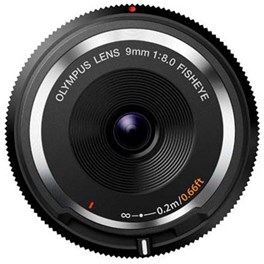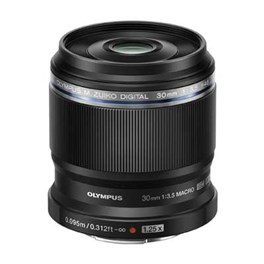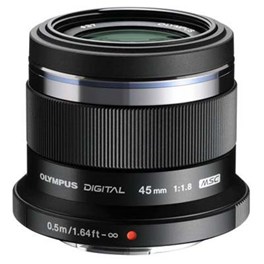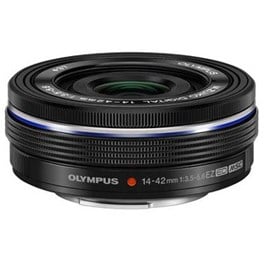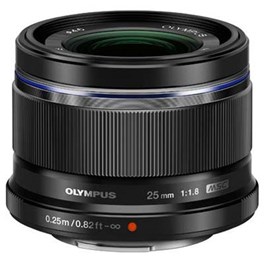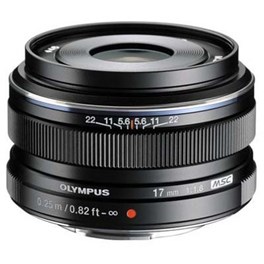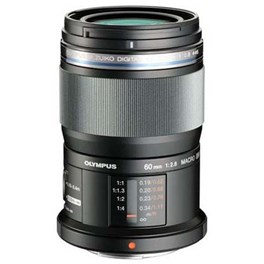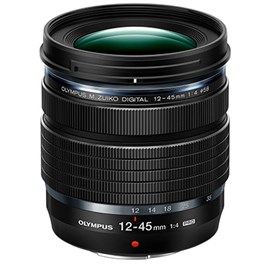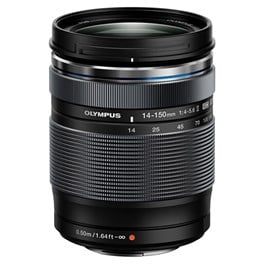
In this guide, we’re picking out ten of the best bargain lenses for Olympus and OM System cameras. Using the Micro Four Thirds mount, the Olympus / OM System range has gained a reputation for producing incredibly compact lenses, ones that make the most of the system’s inherent size advantage. What’s more, many of them are also temptingly cheap.
Olympus and OM System cameras and lenses are basically the same proposition – the latter is merely the company’s new name following the purchase of the Olympus imaging division by OM Digital Solutions. Olympus lenses work perfectly well on OM System cameras and vice versa, so don’t worry about needing an adapter or anything.
And what’s more, remember that as a Micro Four Thirds user you have even more options to play with, as the system is built on an alliance between Olympus / OM System and Panasonic. As such, you may want to check out our run-down of 10 affordable lenses for Panasonic if you want some more options – just remember to stick with the Lumix G lenses, not the Lumix S ones, as those are full-frame L-mount and won’t fit.
While there are plenty of third-party options available for Micro Four Thirds, for this guide we’re sticking with lenses made by Olympus / OM System. We’ve arranged them in price order, starting with the lowest, and have ensured to include a mix of primes and zooms.
Quick Navigation
10 Affordable Olympus & OM System Lenses
Olympus 9mm f8 Fisheye Body Cap Lens - Black
The Olympus 9mm f8 Fisheye Body Cap Lens in black is designed for use with compact system cameras that have a Micro Four Thirds fit. The fisheye lens with fixed 9mm focal length provides extreme, attention-grabbing fisheye shooting perspectives and enables you to create a variety of unusual compositions even when shooting ordinary subjects. The simplified MF (Manual Focus) lever lets you switch between deep focus and close-up shooting with a single action. At just 12.8mm thick and weighing only 30g in weight, the Olympus 9mm f8 Fisheye Body Cap lens takes mobility to a whole new level.
£89.00 View
Pros:
- Incredibly slim design
- Attention-grabbing fisheye perspective
- Great quality for the price
Cons:
- Some corner softness
- Aperture fixed at f8
If you’re a Micro Four Thirds user, this lens is a no-brainer to pick up. It’s called a body cap lens because it is quite literally the size of a body cap – measuring just 12.8mm thick and weighing 30g – and it doesn’t cost all that much more than one either. With a 9mm fisheye perspective, this isn’t a lens you’d use for every shot, but it’s fantastic for embracing the unusual, distorted perspective of ultra-wide angles and creating unique, dynamic imagery.
The optical quality of this lens is much, much better than you’d expect from a lens of this size (and at this price), with a generous sweet spot of sharpness in the centre and only a little softness in the corners. Be aware that the aperture is fixed at f8, so you’re going to want plenty of light when you shoot with this lens.
Olympus M.Zuiko Digital ED 30mm f3.5 Macro Lens
Boasting a powerful magnification of 2.5x (35mm equivalent) and a focus distance of just 9.5cm, the Olympus 30mm f3.5 M.Zuiko Macro Lens features a near-silent focus mechanism, lightweight design, and an optical performance that matches the 25mm and 45mm f1.8 lenses. It delivers beautiful, circular bokeh with virtually no distortion, and is constructed from 7 lens elements in 6 groups.
£269.00 View
Pros:
- Excellent magnification
- Super-close focusing distance
- Useful 60mm equivalent focal length
Cons:
- Not weather sealed
- No focus distance scale
Macro photography sometimes gets a reputation for being a costly pursuit, but this lens from Olympus is super-affordable and is packed with amazing features for shooting subjects up close. For a start, the magnification factor of the lens is an impressive 1.25x (a lens needs just 1.0x to be considered a “true” macro lens), meaning it renders subjects larger than life-size on the sensor. Couple this with an incredibly short minimum focusing distance of just 1.5cm, and you can see how capable this lens is for close-ups.
And that’s not it’s only trick. With a 60mm equivalent focal length, the Olympus M.Zuiko Digital ED 30mm f3.5 Macro also doubles up pretty well as a walk-around and street lens. True, it’s not weather-sealed so you’ll have to be careful in wet conditions, but it’s still an excellent, reliable performer in all sorts of shooting situations.
Olympus M.Zuiko Digital 45mm f1.8 Digital Lens - Black
The Olympus 45mm f1.8 M.ZUIKO Digital Lens is a short-telephoto prime designed for Micro Four Thirds compact system cameras. With its equivalent range of 90mm on a 35mm film camera and large f/1.8 aperture, the lens is ideal for a variety of applications, including portraiture, interior work, low-light shooting, and everyday snapshots.
£299.00 View
Pros:
- Affordable portrait lens
- Silent, smooth focusing
- Fits in a pocket
Cons:
- Hood not included
Another absolute gimme of a lens, if you’ve any interest at all in shooting portraits on your Olympus or OM System camera, picking up this lens should be your first port of call. A budget-friendly alternative to the likes of the mighty Panasonic 42.5mm f1.2 ASPH Leica DG Nocticron OIS, the Olympus M.Zuiko Digital 45mm f1.8 Digital produces a 90mm equivalent field of view. It can open up to f1.8 for shallow depth of field, with pleasing bokeh in the background. It also focuses quickly and efficiently – and unlike equivalent tele primes you’d get for other systems, it practically fits in your pocket!
This is a lens that shows off the real strengths of the Micro Four Thirds system. It’s light, it’s affordable and it produces terrific quality. Also, the silent autofocusing system means it’s a great option for movies as well as stills.
Olympus M.Zuiko Digital ED 14-42mm f3.5-5.6 EZ Lens - Black
The Olympus 14-42mm f3.5-5.6 EZ M.ZUIKO lens in black with electronic zoom (EZ) perfectly complements the OM-D and PEN range in size, style and performance, delivering crisp, edge-to-edge quality throughout the entire zoom range. When attached to a compact system camera with built-in Wi-Fi users can control the 3x electronic zoom from a smartphone or tablet and view what the camera sees in Live View mode, which is particularly useful for capturing group family portraits at special events. At the wide end of the focal length the lens offers a minimum focusing distance of 20cm making it great for close-up portraits and dynamic nature shots. Suitable for everyday picture taking, the extremely lightweight (93g) 14-42mm EZ lens with quiet autofocus zoom operation can be adjusted manually for smooth, precise control.
£349.00 View
Pros:
- Electronic zoom can be controlled remotely
- Weighs just 93g
- Autofocus speed impresses
Cons:
- Comparatively narrow variable aperture
There are some Olympus lenses that are nothing short of astonishing in terms of the engineering prowess on display. How on earth did they cram a 3x optical zoom into a lens body as small as that of the Olympus M.Zuiko Digital ED 14-42mm f3.5-5.6 EZ – which weighs just 93g, and measures 6cm on its longest edge? Frankly, we’re not sure, but they did, and it’s great news for MFT photographers and videographers alike.
The ‘EZ’ moniker in the lens name denotes an electronic zoom mechanism. Not only is this good for moviemaking as it makes it easy to produce smooth zooming movements, but it also means the zoom action can be controlled remotely just like other camera settings, using a smart device connected to Wi-Fi or Bluetooth. Extra handy if you’re vlogging and are physically separated from the camera. It also focuses very fast, with a non-rotating front element that’s handy if you’re using filters.
Olympus M.Zuiko Digital 25mm f1.8 Lens - Black
The Olympus 25mm f1.8 M.ZUIKO Digital lens in black is an ultra-compact, lightweight prime lens with bright, f1.8 aperture to ensure excellent optical performance in all situations. The lens' optical construction ensures your point of interest is stunningly sharp, while the surrounding background is beautifully soft with a natural bokeh (blur) effect. The lens features a built-in MSC mechanism for quick and quiet autofocus operation and offers a 25mm minimum focusing distance, which can be increased to 17cm with the optional Olympus MCON-PO2 Macro Conveter. The texture and build quality of this lens is designed to seamlessly integrate with the Olympus Micro Four thirds cameras, such as the OM-D E-M10.
£379.00 View
Pros:
- Useful ‘nifty fifty’ form factor
- Very good sharpness, even wide open
- Quick, precise focusing
Cons:
- Not weather sealed
Olympus’ own version of a nifty fifty, with a 50mm equivalent focal length and wide f1.8 aperture, this lens bears a lot of similarity to the 45mm f1.8 we featured earlier in this guide. And frankly, that’s no bad thing! The Olympus M.Zuiko Digital 25mm f1.8 is another lightweight performer that’s great for all-purpose photography and videography. Sharpness is impressive, focusing is quick. There’s a little vignetting in the corners when you use the lens wide open, as is to be expected on a lens of this type, but nothing that’s going to seriously compromise your images.
We particularly like the bokeh effects of this lens, with it producing beautiful quality in the defocused areas of images. At 50mm, this is definitely a viable portrait lens, but it will turn its hand to plenty of other genres of shooting as well.
Olympus M.Zuiko Digital 17mm f1.8 Lens- Black
The Olympus 17mm F1.8 Lens is the first interchangeable prime lens from Olympus designed specifically for the Micro Four Thirds format. Offering a 35mm equivalent focal length of 34mm, this ''Pancake'' lens is both visually striking and optically excellent, while the Micro Four Thirds design means the lens is lightweight and compact.
£399.00 View
Pros:
- Built-in focus clutch
- All-metal build
- Sharpness impresses, even at wider apertures
Cons:
- No weather sealing
A 34mm equivalent lens, the Olympus M.Zuiko Digital 17mm f1.8 is a very early prime from Olympus, and still impresses today. It’s beautifully built, with a metallic body that gives it a premium feel (though be aware that it’s not weather-sealed), and we absolutely love the built-in focus clutch mechanism. Simply pull the focus ring backwards to engage manual focus mode to fine-tune your image, and you’ll also find that a focus distance scale pops out with depth of field markers for f5.6, f11 and f22. A lovely bit of attention to detail, and one that makes the lens just downright enjoyable to use. It provides a somewhat retro experience, complementing the look and feel of Olympus and OM System cameras.
The Olympus M.Zuiko Digital 17mm f1.8 delivers excellent sharpness, even at its maximum aperture. The close-focusing distance is 25cm, and the lens weighs just 120g.
Olympus M.Zuiko Digital ED 60mm f2.8 Macro Lens
The Olympus 60mm f/2.8 M.ZUIKO Digital ED Micro Four Thirds Lens is a dedicated macro lens with a robust, lightweight design and a fast aperture of f/2.8. It features a dust and splash proof body making it an ideal lens for outdoor use. Being a dedicated macro lens, it lets you take shots at close range in true (1:1) life size, as well as offering continuous focusing from 0.19m to infinity.
£449.00 View
Pros:
- Dust-proof and splash-proof body
- 1:1 macro magnification ratio
- Gorgeous circular bokeh
Cons:
- Hood not included
Hardy and beautifully designed, the Olympus M.Zuiko Digital ED 60mm f2.8 Macro is captivating the moment you take it out of the box. And the even better news is that it’s as impressive a lens inside as out. With a tight 120mm equivalent focal length, it can produce life-size images at its closest focal distance, and it turns out absolutely glorious sharpness time and time again. Images are consistently punchy and vibrant, particularly when used at wider apertures (best results are generally at f4-5.6, which is as expected). Bokeh quality is excellent too.
The splash-proofed body on the lens means you can use it outdoors without fear, and the handling is very smartly designed, intuitive and comfortable. For making close-up images with any Micro Four Thirds camera, this budget-friendly lens is an outstanding choice.
Pros:
- A pocketable super-telephoto lens
- Autofocus is impressively fast
Cons:
- Narrow maximum aperture
- Some chromatic aberration at longest telephoto length
This super-telephoto 150-600mm lens really has to be seen to be believed – it measures just 116mm on its longest edge. That’s not a whole lot taller than a can of coke! Of course, this wouldn’t matter if the lens itself weren’t up to snuff, but the Olympus M.Zuiko Digital ED 75-300mm f4.8-6.7 II delivers great results, particularly towards the wider end of its range. With fast focusing action, it’s a great lens for sports, birding and wildlife, though the comparatively narrow aperture range of f4.8-6.7 means you’ll need a decent level of light, or some reliance on an Olympus or OM System camera’s built-in stabilisation.
While it doesn’t achieve the same kind of quality as the more expensive telephotos (which is, y’know, why they’re more expensive), the Olympus M.Zuiko Digital ED 75-300mm f4.8-6.7 II is a great little lens for the amateur shooter who wants plenty of reach.
Olympus M.Zuiko Digital ED 12-45mm f4 PRO Lens
The Olympus 12-45mm f4 Digital ED Pro Lens is a compact and lightweight, high-performance standard zoom lens featuring a fixed aperture. The lens inherits its optical configuration from the ED 12-40mm F2.8 PRO lens renowned for its high-resolution. This state-of-the-art performance is now contained in the world's most compact and lightweight lens body design - capable of covering a focal length starting at wide-angle 24mm and ending at telephoto 90mm (35mm equivalent). Thanks to its small size, the lens delivers high-speed, precise AF ideal for any photographic genre and environment.
£599.00 View
Pros:
- High-end, weather-sealed construction
- Excellent optical quality
- Constant f4 aperture
Cons:
- No focus clutch
- No function button
This is one of the cheapest lenses to merit the Olympus ‘PRO’ designation, which the firm uses to refer to lenses that are made to high standards of quality. As such, you get a lot of features here that feel like they belong on more premium-priced lenses. There’s the weather-sealed body for one, and a constant maximum aperture running through the zoom range, albeit only to f4 – the OM SYSTEM M.Zuiko 12-40mm f2.8 Mk II PRO costs about £300 more.
While this is a pretty simple lens externally, lacking a focus clutch or the physical L-fn button that some photographers prefer, inside it’s a complex jewel. Its optical design features 12 elements in 9 groups, including aspherical lens elements, and the glass has been treated with the ZERO (Zuiko Extra-low Reflection Optical) coating to ensure superior light transmission.
OM SYSTEM M.Zuiko Digital 14-150mm f4-5.6 II Lens - Black
The OM SYSTEM M.Zuiko 14-150mm f4.0-5.6 II lens offers Micro Four Thirds users the flexibility to shoot everything from wide-angle to telephoto. Lightweight and portable, the OM's exclusive MSC "Movie and Still Compatible" lens drive is not only lightning fast for instant auto-focusing, but also virtually silent. Whether you are shooting movies or stills, the lens won’t generate intrusive noise.
£599.00 View
Pros:
- Weatherproof build
- Lens hood included
- Impressive optical quality considering zoom range
Cons:
- No built-in stabilisation
A compact, solidly built all-in-one superzoom, the OM SYSTEM M.Zuiko Digital 14-150mm f4-5.6 II spans an equivalent range of 28-300mm. Superzooms often get a bad rap among photographers, but Olympus and OM System have a surprisingly good track record with them – the Olympus M.Zuiko Digital ED 12-100mm f4 IS PRO is arguably one of the best ever made. This lens doesn’t hit the same highs (hence why it’s half the price), but it puts in a pretty spectacular performance nonetheless.
The lens is fast-focusing, and once again you’ve got the ZERO (Zuiko Extra-low Reflection Optical) coating to reduce reflections and improve image clarity. It’s also nice to see the hood included, as this is often something that needs to be purchased separately. The f4-5.6 maximum aperture means you’ll need a decent level of ambient light, and you’re relying on in-camera stabilisation, but otherwise, this is a comprehensively well-featured lens.

FAQs
What are OM System (Olympus) lenses known for?
OM System lenses are known for their exceptional optical quality and compact design. They are highly regarded for their sharpness and portability, making them a favourite among photographers.
Are Olympus lenses compatible with OM System cameras?
Yes, Olympus lenses are fully compatible with OM System cameras. OM System is a brand created by Olympus, so the lenses designed for Olympus cameras work seamlessly with OM System cameras.
Can I use older Olympus lenses with the latest OM System cameras?
In most cases, yes. OM System cameras are designed to be compatible with older Olympus lenses, especially those with the Micro Four Thirds mount. Some may require firmware updates for full compatibility, so it's a good idea to check the manufacturer's website for a list of compatible lenses.
What is the difference between Olympus and OM System lenses?
The main difference is the branding. Olympus lenses were originally designed for Olympus cameras, while OM System lenses are designed for cameras under the OM System brand. However, they share the same Micro Four Thirds mount and high-quality optics.
Do Olympus and OM System lenses have image stabilisation?
Many Olympus and OM System lenses come with in-lens image stabilisation, which can help reduce camera shake and produce sharper images. However, the presence of image stabilisation may vary between lens models, so it's important to check the specific lens specifications.
Are there third-party lenses available for OM System cameras?
Yes, there are third-party lens manufacturers that produce lenses compatible with OM System cameras. Brands like Panasonic and Sigma offer lenses for the Micro Four Thirds mount, expanding the range of options for OM System users.
Are OM System lenses weather-sealed?
Many OM System lenses are weather-sealed, offering protection against dust and moisture. Weather-sealed lenses are particularly useful for outdoor and challenging shooting conditions, providing added durability to your gear.
Can I use Olympus or OM System lenses on other camera brands?
Olympus and OM System lenses are specifically designed for Micro Four Thirds cameras, so they may not be directly compatible with other camera brands. However, with the use of adapters, you can often mount them on cameras from different manufacturers, although some features may be limited.
How do we decide?
Our in-house photography experts, store staff and partners all work collaboratively to pour over these guides. The cameras and equipment recommended in our guides are based on their personal opinion, empirical experience and of course, feedback from our customers.
We way up price, features, quality and the all-important 'je ne sais quoi' to make sure we recommend products that will delight and inspire.
If you would like more advice on any purchase our contact centre staff are here to help. Alternatively, you can reach us via email or social media.
And don't forget. If you were to purchase anything based on our recommendations you'll be covered by our full returns policy
Buying Guides

